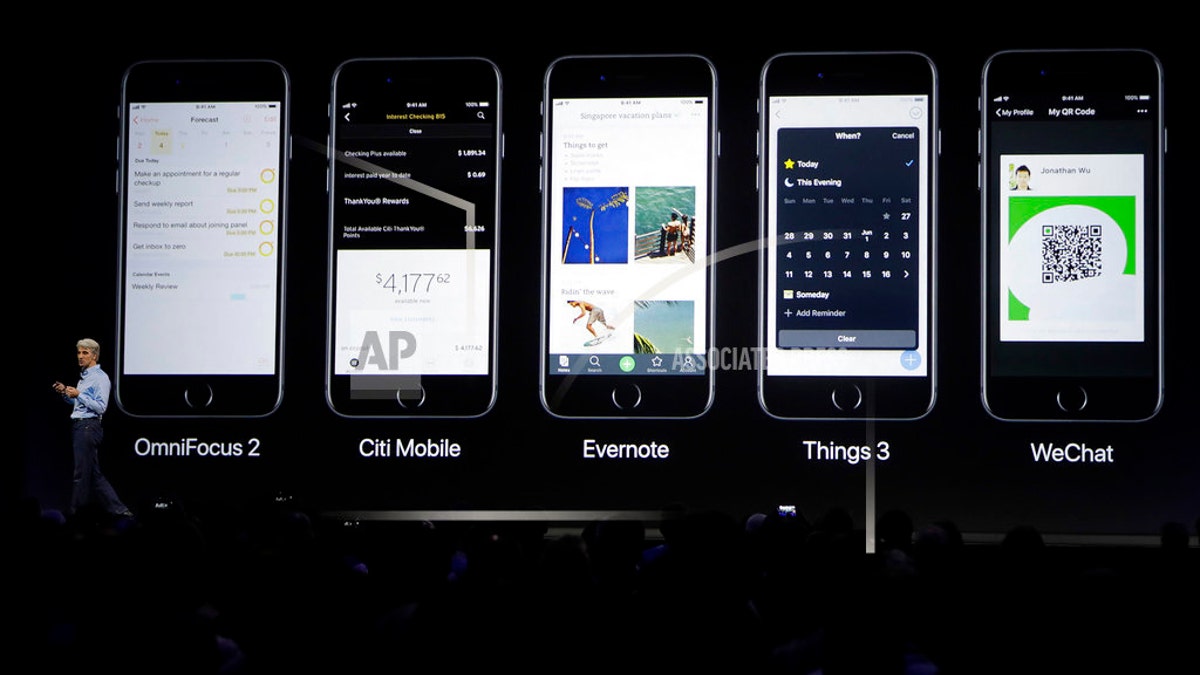
File photo: Craig Federighi, Apple's senior vice president of software engineering, speaks during an announcement of new products at the Apple Worldwide Developers Conference in San Jose, Calif., Monday, June 5, 2017. (AP Photo/Marcio Jose Sanchez) (Copyright 2017 The Associated Press. All rights reserved.)
When an iPhone gets damaged, a trip to an Apple Store is required with fingers crossed it is eligible for in-warranty repair. But what criteria does Apple use for deciding that? A leaked document reveals all.
The 22-page document, discovered by Business Insider, is called the "Visual/Mechanical Inspection Guide" or VMI for short. It details three categories of damage covering the iPhone 6, 6S, and iPhone 7 models. The damage either counts as eligible for warranty service, eligible for out-of-warranty service, or ineligible for service.
Here's how the three categories breakdown:
Eligible for Warranty Service
- Debris under display glass or pixel anomaly.
- FaceTime camera foam misalignment.
- Single hairline crack to front glass without point of impact or additional cracks.
Eligible for Out-of-Warranty Service
- Liquid damage confirmed by user.
- Clear evidence of corrosion or internal LCI triggered.
- Any LCD fractures.
- Damage due to laser contact with camera.
- Single hairline crack with point of impact or additional cracks.
- Any chips or multiple cracks in glass.
- Damaged audio/Lightning connector.
- Extreme abrasion, puncture holes, or button damaged or missing from drop.
- Bent enclosure.
- Split enclosure.
- Speaker/microphone grille damage.
Ineligible for Service
- Mismatch between configuration code and the color, size, or model.
- Intentional tampering or damage.
- Disassembled unit or missing parts.
- Non-Apple batteries.
- Catastrophic damage.
What the guidelines make clear is Apple will not even consider a repair if you've tried to modify your iPhone or fitted unofficial parts such as a new battery. It also highlights how little is actually covered under the warranty. However, most common types of damage can and will be repaired for a price.
With regards to that "Debris under display glass or pixel anomaly" in-warranty repair, the guidelines also note that the repair should only be offered if the user points out the problem. So if an Apple technician notices it, they shouldn't mention it unless the owner does first.
The guide goes on to explain how cosmetic damage is not covered under warranty and gives several example photos of what counts as cosmetic damage. The rule is: if there is no hardware issue, then cosmetic damage is not eligible for repair or replacement.
If you want to limit the chances of your iPhone being judged using this criteria due to damage, then buy a good case. It may hide the sleek lines of your iPhone, but it will also protect it from many of those "eligible for out-of-warranty" costly repairs.
This article originally appeared on PCMag.com.
